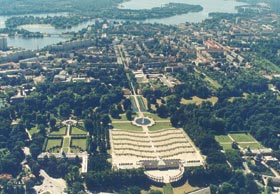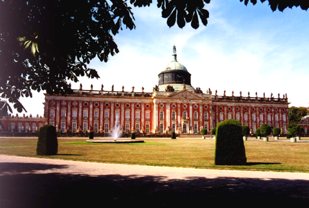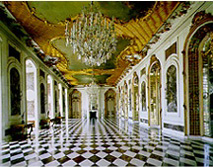 | |
| The magnificent landscaped gardens at Potsdam have been called the Versailles of Germany. There are more than 20 castles and palaces in the area and few grander than the Neues Palais, below, which stands at the end of the long avenue running through Sanssouci Park. | |
 | |
| New Palace | |
 | |
| Inside of New Palace |